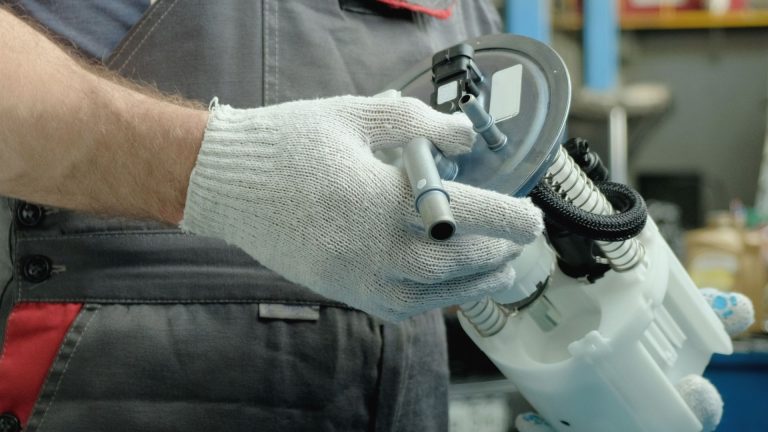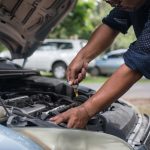Common Problems after Changing the Fuel Pump

Most car owners claimed that after having the gasoline pump fixed, it no longer functions. Others reported a tough starting, forceful acceleration, or fluctuating fuel gauge readings. Inappropriate installation, unsuitable aftermarket pumps, or a defective gasoline sending unit could all be to blame for this.
1. After changing the fuel pump, the engine runs irregularly.
After replacing the gasoline pump, some people may claim that their car idles or runs erratically. The engine is typically lacking fuel, which causes this issue. Given that you recently installed a new fuel pump, the majority of you would probably rule out that notion. However, we’ll clarify below.
Cause
The incorrect installation of the fuel pump may be to blame if your automobile runs or idles erratically following a fuel pump replacement. There can be problems specifically with the electrical harness. As a result, it’s possible that your system isn’t providing enough power to the gasoline pump.
How to correct it
Here’s a fix for it. You must ensure that every connection in your electrical system is solid and that it is making good contact with the corresponding counterparts on or inside the engine.
2. A hard start or lack of fuel pressure following fuel pump installation
Hard starts are the second typical issue that arises after installing a new pump. Even short amounts of time of sitting can sometimes make it harder for the car to start (cranks for about 30 seconds before starting).
Cause
There may not always be fuel pressure once a replacement pump is installed, but the pump still functions. Lack of fuel pressure will either make it impossible for the engine to start or will cause it to stall out.
How to Correct It
Remove the line from your gasoline filter from the top of the tank to accomplish this. the addition of a fuel pressure gauge. Connect a hose to the filter’s supply line. To improve airflow, open a few of your hood’s vents.
In other types, the fuel pressure can range from 45 to 55 psi, although it should be between 60 and 80 psi. For correct information regarding the recommended fuel-pressure range, prior to running this test.
There can be a vacuum leak someplace if there is no fuel in the pipe.
If the gasoline pump is experiencing too much resistance, the engine will crank longer before reaching the necessary fuel pressure to start. However, your fuel pressure ought to remain constant if there were no problems with the wiring harness along the route.
An OBD II scanner can diagnose fuel pressure problems even if you don’t have a fuel pressure gauge. For two methods of checking fuel pressure without a gauge, read our tutorial.
The relay that manages the fuel pump is the next component you should examine to see if it is receiving electricity from your car’s electrical system.
3. The fuel pump is faulty
Some issues that may occur if the gasoline pump is put upside down include not receiving enough power to start or run your engine and leaks from the bottom of your tank. The problem may be referred to as “fuel pump not operating after replacement” or “there is no fuel.” There is no pumping action.
Cause
The wiring harness being in the way is the most frequent cause of this issue. This is due to the fact that the fuel pump connector was fitted in the incorrect position, which could result in your fuel pump going into your engine or vice versa.
How to solve It You may have noticed that aftermarket parts, rather than OEM parts, are more frequently involved in this scenario. You must inspect each of your wiring harnesses to ensure that no wires are blocking the fuel pump connector.
4. Fuel gauge readings that fluctuate after a fuel pump replacement
You discover that your fuel gauge is reading erratically after replacing the fuel pump. It will alternate between the words “empty” and “filled.” (As the fuel tank approaches empty, the pressure in a new fuel pump decreases.)
Cause
Your fuel pump can be changed in two different methods. Either the housing (which includes the fuel gauge transmitting unit) or the pump and motors alone can be totally replaced.
If, following the installation of a new fuel pump, you experience an issue with your gas gauge. It must be the sending unit for the fuel gauge.
How to Solve It
Consider purchasing a new sending unit if you recently changed the fuel pump and motor. Alternatively, if the fuel pump housing has been entirely installed, you could want a better-quality sending unit.
High fuel pressure and temperature can damage fuel sending systems. This may result in them breaking down more frequently than they ought to, which results in this inconsistent conduct.
5. Fuel gauge is inoperative after fuel pump installation
Your gas gauge might not operate if you replace the fuel pump.
Cause
Similar to inconsistent reading, this frequently happens when an inferior aftermarket sender is used.
How to Solve It
Your aftermarket fuel gauge transmitting unit can be corrected by switching it out with one that was designed to fit a superior car. The manufacturer’s brand is recommended over “aftermarket” parts since they fit better and have higher build quality.
Where can I buy a new one?
You can find a replacement part on willsparts.com.ng online auto parts store. You can order online and have it shipped to your home.







